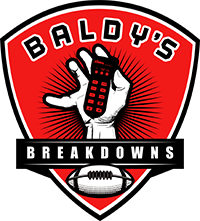
In the high-stakes arena of the NFL, success isn’t just about individual talent or a masterful playbook. It’s about the intricate chemistry that pulsates within a team, the unspoken connections, and the relentless drive to lift each other higher. Team dynamics become the invisible force that turns a group of athletes into an unstoppable unit. To truly understand the heart and soul of NFL teams, we must dive deep into how these dynamics evolved, the bonds forged under pressure, and the shared aspirations that lead to triumph. Join us as we explore the essence of what makes a good NFL team great.
The Invisible Force: How Team Dynamics Propel NFL Teams to Greatness
When you watch an NFL team steamroll their opposition, it’s easy to attribute their success to superior strategy or phenomenal individual performances. But the hidden truth behind consistent triumphs lies in something deeper: team dynamics. Understanding these unseen forces can reveal why some teams rise like legends while others falter, even when bursting with talent.
Building Trust on and off the Field
For any NFL team, trust is the cornerstone of effective team dynamics. It’s the belief that your teammate will be where they need to be when the moment arrives, whether in a tightly choreographed play or in clutch situations. Building this trust requires more than practice; it demands camaraderie off the field. Friendships between players, traditional team-building exercises, and even moments of vulnerability significantly impact the way teammates trust one another when the stakes are high.
Leadership and Its Ripple Effect
An NFL roster contains a blend of veterans and rookies, each contributing unique perspectives and talents. However, strong leadership can align these diverse personalities toward a single goal. Captains and veteran stars often set the tone for the rest of the team through their work ethic, mental toughness, and willingness to hold everyone accountable. Leadership isn’t just about giving inspiring speeches; it’s embedded in daily actions showing younger players what’s expected.
The Role of Coaches in Shaping Dynamics
Coaches are often the unsung heroes of team dynamics. They are the architects behind the scenes, designing not just the playbook but the culture. Good coaches understand the need to build relationships with each player, acknowledging individual aspirations while aligning them with team goals. Furthermore, impressive communication skills, empathy, and adaptability distinguish good coaches from great ones.
The Power of Shared Adversity
If trust is the foundation, shared adversity is the crucible that solidifies team dynamics. Teams that have weathered difficult losses, key injuries, or unexpected challenges often emerge stronger. Moments of collective failure foster resilience, providing valuable lessons that mitigate future risks. The 2017 Philadelphia Eagles are a prime example: battling through injuries, they forged an unyielding team spirit that ultimately led them to Super Bowl victory.
Diversity as an Asset
Divergence of thinking can be a team’s unique strength, offering multiple perspectives for problem-solving under pressure. Having players from various backgrounds, ethnicities, and levels of experience provides a well-rounded approach to each play and encounter. Embracing diversity within an NFL team balances the blend of natural talents with learned skills, offering a more adaptive and unified team front.
Emotional Intelligence: The X-Factor
More and more, emotional intelligence (EI) is recognized as a crucial component in successful team dynamics. Players with high EI can better manage their emotions, empathize with teammates, and maintain focus even when tensions ride high. Teams rich in emotional intelligence are better equipped to handle the ups and downs of a strenuous NFL season, existing as not just colleagues but a tight-knit unit with a common goal.
Technology’s Role in Team Dynamics
Modern technology also shapes how teams operate, from performance analytics to communication tools that keep everyone connected. Tools like Wearable Biometrics allow teams to monitor player health and performance, fostering teamwork by ensuring every player is at their best. Additionally, virtual reality (VR) for play simulations can enhance learning and make practices more dynamic and beneficial.
The Telltale Signs of Strong Team Dynamics
Want to spot a team with strong dynamics? Look for consistent on-field communication, fewer misunderstandings, and seamless adjustments to unexpected challenges. Pay attention to sideline behavior: teams with strong dynamics often have players encouraging each other and celebrating small wins. Watch how they react in huddles, both in victory and during crucial decision-making moments.
Celebrating Wins and Learning from Losses
Winning is exhilarating, but the real victory lies in how a team processes both wins and losses. Teams with sound dynamics use each experience as a building block, celebrating wins as a testament to their collective effort while dissecting losses to uncover growth opportunities. They embrace a learning culture, where every game becomes a lesson that sharpens their unity and resolve.
Conclusion
Team dynamics are as potent as any play or strategy, shaping the Holy Grail of NFL success. They transform a collection of athletes into a cohesive, adaptable, and formidable force capable of achieving greatness. Addressing team dynamics doesn’t just lead to wins. It cultivates a legacy of excellence, binded by trust, shaped by leadership, and enriched by shared experiences.
Stay tuned to learn more about the intricacies that shape the game by following us on Facebook, X, and YouTube. Let’s delve deeper into the heart and soul of what makes NFL greatness.
Team dynamics can often be the unsung hero of NFL success, illustrating that the key to consistent triumphs lies in the understanding and nurturing of collective spirit as much as individual talent.
